VENICE BIENNALE 2024 – LATIN AMERICA EVERYWHERE
The 2024 edition of the Venice Biennale is coming to an end. Stranieri Ovunque - Foreigners Everywhere, curated by Brazilian Adriano Pedrosa, offered a reflection through art about migration and borders, recurring themes in today's global discussion. Arte al Día was present to cover the 60th International Exhibition, not only to bring the work of more than 300 artists from almost 100 countries, but also to focus on the contribution of Latin American artists to the global scene, whose presence marked a high point in this edition.
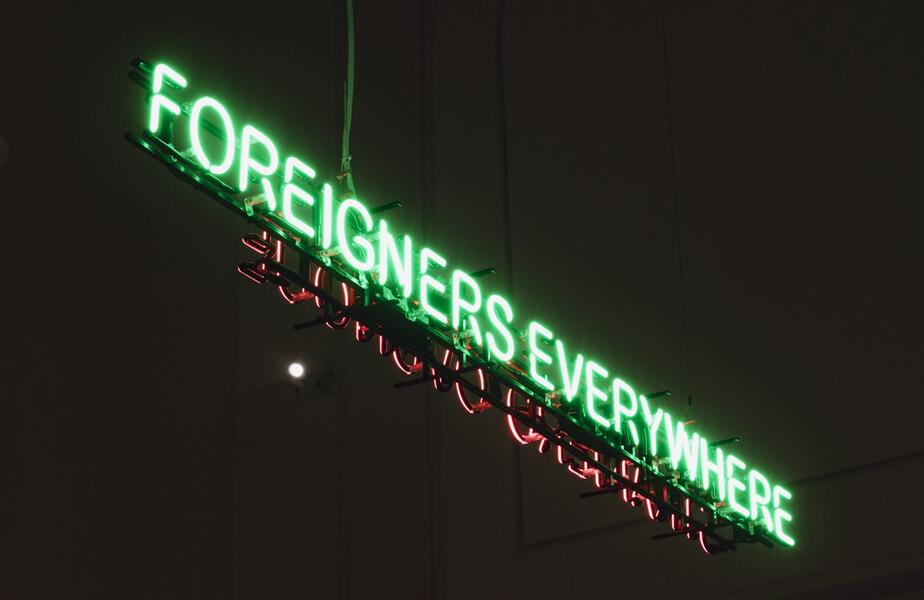
Adriano Pedrosa, the first Latin American to direct the Venice Biennale, chose to explore the condition of the foreigner as a thematic axis, inspired by the work of the Claire Fontaine collective. In his vision, “foreigner” is the one who crosses cultural and geographic boundaries, but also the one who challenges norms of gender, ethnicity and hegemonic culture. This year's biennale honored not only geographically displaced artists, but also those "foreigners in their own land": queer, indigenous, folk and self-taught artists who inhabit the peripheries of the art system.
In line with the postcolonial look of Pedrosa's curatorial proposal, space was given to artists who had never exhibited at the Biennale before and who, mostly, came from countries with histories of colonization. This decentralized approach underscores the need to question Eurocentric narratives and represents a shift towards the inclusion of diverse voices and perspectives [Read full review].
-
Julia Isídrez. 60th International Art Exhibition – La Biennale di Venezia, Stranieri Ovunque – Foreigners Everywhere. Photo by: Marco Zorzanello. Courtesy La Biennale di Venezia.
-
Julia Isídrez. 60th International Art Exhibition – La Biennale di Venezia, Stranieri Ovunque – Foreigners Everywhere. Photo by: Marco Zorzanello. Courtesy La Biennale di Venezia.
-
Claudia Andujar. 60th International Art Exhibition – La Biennale di Venezia, Stranieri Ovunque – Foreigners Everywhere. Photo by: Matteo de Mayda. Courtesy La Biennale di Venezia.
-
MAHKU (Movimento dos Artistas Huni Kuin) Kapewe Pukeni [Bridgealligator], 2024. Site-specific installation 750 m260. Esposizione Internazionale d’Arte - La Biennale di Venezia, Stranieri Ovunque–Foreigners Everywhere 60th International Art Exhibition. Photo: Matteo de Mayda Courtesy: La Biennale di Venezia.
Within this proposal, more than a third of the artists present came from Latin America, with prominent names such as La Chola Poblete, who received a special mention for her work which explores identity, gender and territory. Also, Peruvian photographer Roberto Huarcaya presented Huellas Cósmicas, an emblematic project -which was part of the 2023 edition of Pinta PArC- that captures the majesty of the Peruvian rainforest on a 30-meter photosensitive paper. The main exhibition also housed the works of the great Paraguayan ceramist Julia Isídrez -an artist who was part of Pinta Sud | ASU 2023 and 2024- and her mother Juana Marta Rodas, with creations that intertwine the mythical with the real.
At the same time, Arte al Día aimed to reflect on the intertwining of market and Biennale that, although its foundations are still mainly cultural, there is no doubt that the international visibility it offers helps artists to consolidate in the market, opening new doors [Read full review].
-
River Claure. 60th International Art Exhibition – La Biennale di Venezia, Stranieri Ovunque – Foreigners Everywhere. Photo by: Marco Zorzanello. Courtesy: La Biennale di Venezia
-
La Chola Poblete. 60th International Art Exhibition – La Biennale di Venezia, Stranieri Ovunque – Foreigners Everywhere.
-
River Claure. 60th International Art Exhibition – La Biennale di Venezia, Stranieri Ovunque – Foreigners Everywhere. Photo by: Marco Zorzanello. Courtesy: La Biennale di Venezia
-
Pavilion of SPAIN. PINACOTECA MIGRANTE / MIGRANT ART GALLERY. 60th International Art Exhibition - La Biennale di Venezia. Photo: Matteo de Mayda. Courtesy: La Biennale di Venezia
The dialogue between figuration and abstraction also marks this edition, where both styles are present to explore both historical narrative and psychosocial processes [Read full review]. In addition, ecology and reflections about the future appear as crucial themes in an era of environmental crisis, positioning art as a means to rethink the link between human beings and nature, from which new alternatives can emerge to rethink the world we want [Read the complete review].
With this coverage, Arte al Día reaffirms its commitment to making Latin American artists visible and bringing their voices to the global scene. The Venice Biennale 2024 has been a historic milestone, not only for its inclusive curatorial approach but also because it consolidated Latin America's presence in the contemporary art circuit.
-
Installation views Attila cataract your source at the feet of the green peaks will end up in the great sea blue abyss we drowned in the tidal tears of the moon. La Biennale di Venezia. Images courtesy of Julien Creuzet.
-
Pavilion of JAPAN Compose 60th International Art Exhibition - La Biennale di Venezia. Photo by: Matteo de Mayda. Courtesy: La Biennale di Venezia
-
Pavilion of GERMANY. Thresholds 60th International Art Exhibition - La Biennale di Venezia. Photo by: Matteo de Mayda. Courtesy: La Biennale di Venezia
-
Installation views Attila cataract your source at the feet of the green peaks will end up in the great sea blue abyss we drowned in the tidal tears of the moon. La Biennale di Venezia. Images courtesy of Julien Creuzet.
Related Topics
May interest you
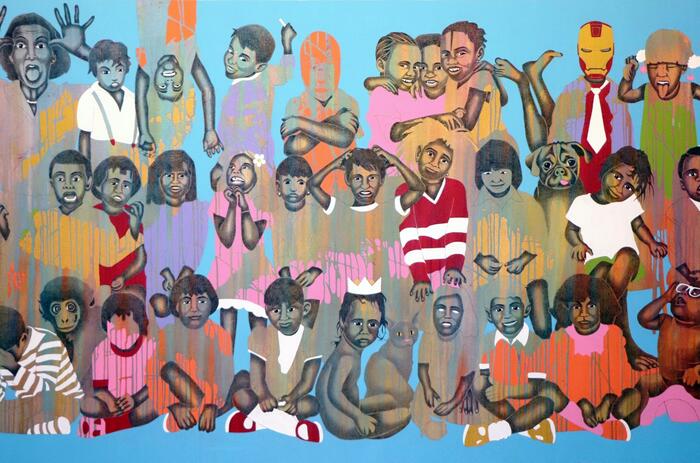
Noutoupatou, Mondes caribéens en mouvement is the collective exhibition organized by A plus A Gallery and School for Curatorial Studies Venice, in collaboration with Campus Caraïbéen des Arts and curated by Paola Lavra. The exhibition, supported by the Institut français, coincides with the closing of the 60th International Art Exhibition, La Biennale di Venezia.

Noutoupatou, Mondes caribéens en mouvement is the collective exhibition organized by A plus A Gallery and School for Curatorial Studies Venice, in collaboration with Campus Caraïbéen des Arts and curated by Paola Lavra. The exhibition, supported by the Institut français, coincides with the closing of the 60th International Art Exhibition, La Biennale di Venezia.
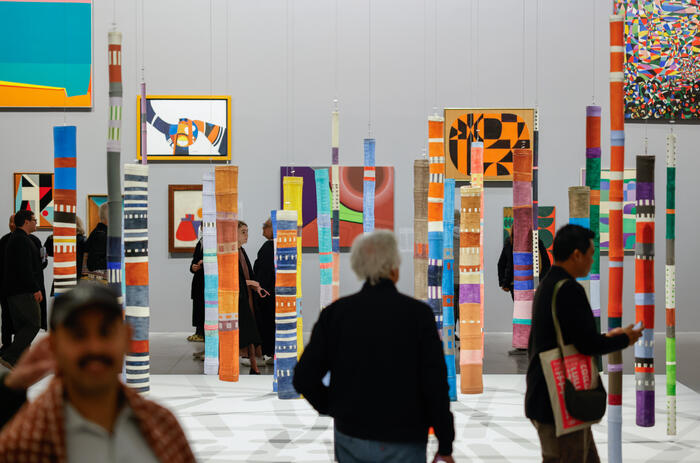
The section dedicated to abstraction in the Strangers Everywhere / Stranieri Ouvunque exhibition at the Venice Biennale 2024 explores how artists from the Global South -particularly those from Latin America- pursued less rigorous forms, undulating lines and a vibrant color palette stemming from references of their own.
THE OTHER FORMS OF ABSTRACTION IN LATIN AMERICA
The section dedicated to abstraction in the Strangers Everywhere / Stranieri Ouvunque exhibition at the Venice Biennale 2024 explores how artists from the Global South -particularly those from Latin America- pursued less rigorous forms, undulating lines and a vibrant color palette stemming from references of their own.
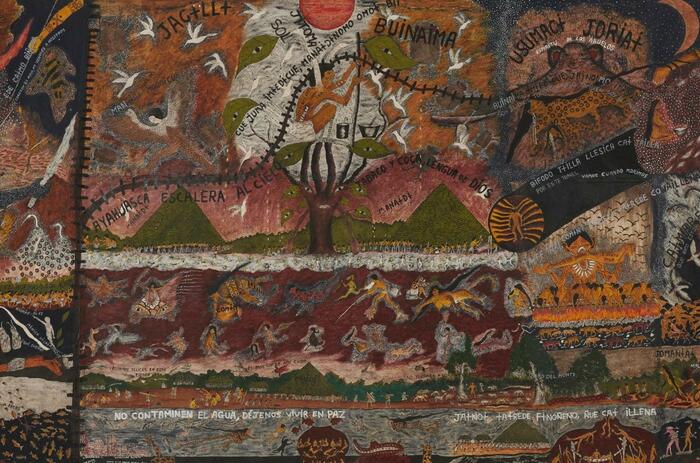
Crisis Galería announced the recent acquisition of the painting Cosmovisión Huitoto (2022) by the outstanding indigenous artist Santiago Yahuarcani by the Museum of Modern Art of New York (MoMA). This extraordinary large format work, made with natural dyes and acrylic paint on llanchama, is one of the largest produced by the artist with more than two meters high and four meters wide.
SANTIAGO YAHUARCANI ENTERS THE MoMA COLLECTION
Crisis Galería announced the recent acquisition of the painting Cosmovisión Huitoto (2022) by the outstanding indigenous artist Santiago Yahuarcani by the Museum of Modern Art of New York (MoMA). This extraordinary large format work, made with natural dyes and acrylic paint on llanchama, is one of the largest produced by the artist with more than two meters high and four meters wide.
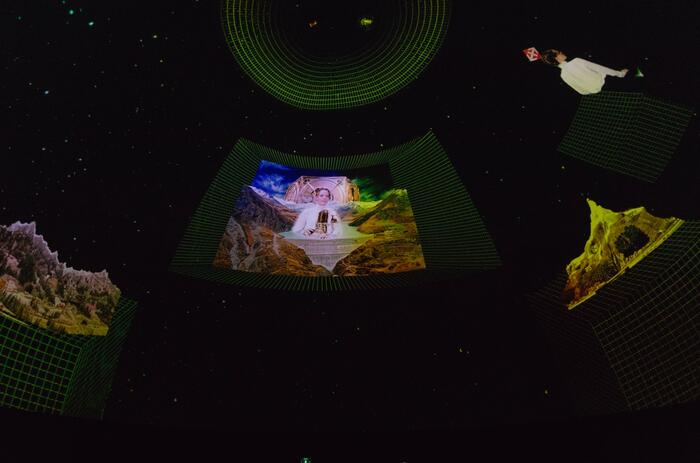
The Venice Biennale 2024 offers an exceptional platform for examining the challenges and opportunities facing the future. The pavilions of Japan, Germany, Switzerland and Hungary trace different forms of looking at and thinking about the world to come, projecting visions of the environment, equilibrium, adaptation, world order and, of course, collective memory.
POSSIBLE FUTURES AT THE VENICE BIENNALE
The Venice Biennale 2024 offers an exceptional platform for examining the challenges and opportunities facing the future. The pavilions of Japan, Germany, Switzerland and Hungary trace different forms of looking at and thinking about the world to come, projecting visions of the environment, equilibrium, adaptation, world order and, of course, collective memory.

The title of the 60th International Art Exhibition of the Biennale di Venezia, "Stranieri Ovunque", refers, in part, to foreignness as the inherent nature of the subject. Understood in this way, the national pavilions of Spain, the Netherlands and the United Kingdom exhibit artistic proposals that develop the theme of colonialism and reconstruct histories, remedy ties between identity and territory, and explore the dramatic plurality of this potent historical axis. That said, this review does not intend to unveil or unpack the most unjust transcendental truths, but merely to reflect on the musings of others.
THREE PAVILIONS AT BIENNALE 2024 THAT EXPLORE THEIR OWN COLONIAL PASTS
The title of the 60th International Art Exhibition of the Biennale di Venezia, "Stranieri Ovunque", refers, in part, to foreignness as the inherent nature of the subject. Understood in this way, the national pavilions of Spain, the Netherlands and the United Kingdom exhibit artistic proposals that develop the theme of colonialism and reconstruct histories, remedy ties between identity and territory, and explore the dramatic plurality of this potent historical axis. That said, this review does not intend to unveil or unpack the most unjust transcendental truths, but merely to reflect on the musings of others.
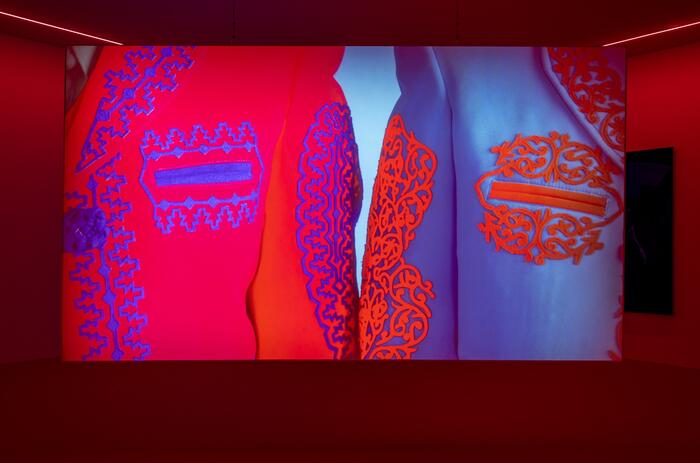
The voices of Latin American artists emerge strongly in this 2024 edition of the Venice Biennale. Claudia Alarcón, Julia Isídrez and Juana Marta Rodas, Ana Segovia, Frieda Toranzo Jaeger and Claudia Andújar lead viewers on a profound journey through their cultural heritage and unique artistic practices.
FIVE LATIN AMERICAN ARTISTS EXHIBITING FOR THE FIRST TIME AT THE VENICE BIENNALE
The voices of Latin American artists emerge strongly in this 2024 edition of the Venice Biennale. Claudia Alarcón, Julia Isídrez and Juana Marta Rodas, Ana Segovia, Frieda Toranzo Jaeger and Claudia Andújar lead viewers on a profound journey through their cultural heritage and unique artistic practices.
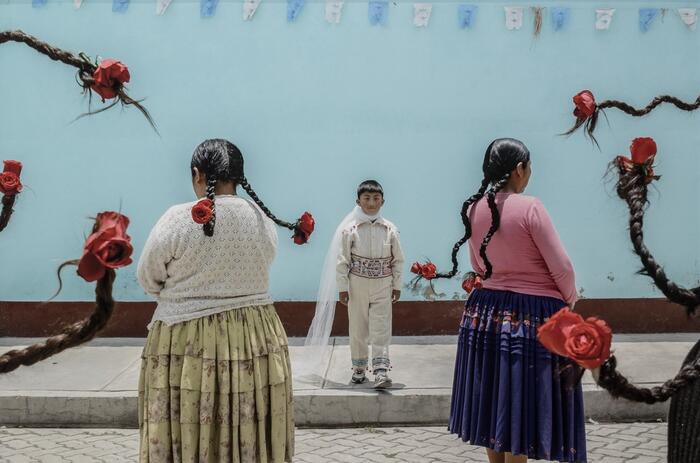
Why highlight stories that often remain on the periphery of artistic discourse? Adriano Pedrosa justifies his curatorial decision with works by 331 artists -mostly from the global south- that open the way to powerful narratives. Finally, we see the axis being twisted. It is difficult to escape the white gaze, more so to move authentically through a Eurocentric space. Given this, the communicative reach of figuration serves to challenge the symbolic order of domination and destabilize the colonial project. The stories that are made explicit and the narratives of magic and everyday life help to recognize without revictimizing.
STORIES FROM THE SOUTH – THE VENICE BIENNALE TURNS AROUND ITS AXIS
Why highlight stories that often remain on the periphery of artistic discourse? Adriano Pedrosa justifies his curatorial decision with works by 331 artists -mostly from the global south- that open the way to powerful narratives. Finally, we see the axis being twisted. It is difficult to escape the white gaze, more so to move authentically through a Eurocentric space. Given this, the communicative reach of figuration serves to challenge the symbolic order of domination and destabilize the colonial project. The stories that are made explicit and the narratives of magic and everyday life help to recognize without revictimizing.
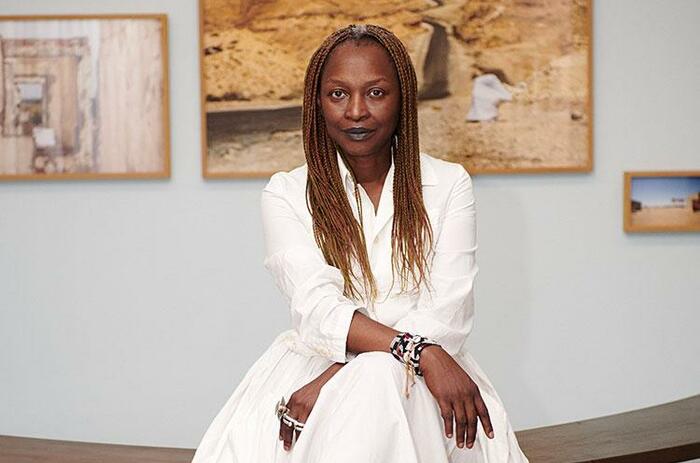
The board of La Biennale di Venezia appointed Koyo Kouoh as Director of the Visual Arts Department, with the specific task of curating the 61st International Art Exhibition to be held in 2026.
KOYO KOUOH IS VENICE BIENNALE 2026’S APPOINTED CURATOR
The board of La Biennale di Venezia appointed Koyo Kouoh as Director of the Visual Arts Department, with the specific task of curating the 61st International Art Exhibition to be held in 2026.

Noutoupatou, Mondes caribéens en mouvement is the collective exhibition organized by A plus A Gallery and School for Curatorial Studies Venice, in collaboration with Campus Caraïbéen des Arts and curated by Paola Lavra. The exhibition, supported by the Institut français, coincides with the closing of the 60th International Art Exhibition, La Biennale di Venezia.

The section dedicated to abstraction in the Strangers Everywhere / Stranieri Ouvunque exhibition at the Venice Biennale 2024 explores how artists from the Global South -particularly those from Latin America- pursued less rigorous forms, undulating lines and a vibrant color palette stemming from references of their own.
THE OTHER FORMS OF ABSTRACTION IN LATIN AMERICA
The section dedicated to abstraction in the Strangers Everywhere / Stranieri Ouvunque exhibition at the Venice Biennale 2024 explores how artists from the Global South -particularly those from Latin America- pursued less rigorous forms, undulating lines and a vibrant color palette stemming from references of their own.

Crisis Galería announced the recent acquisition of the painting Cosmovisión Huitoto (2022) by the outstanding indigenous artist Santiago Yahuarcani by the Museum of Modern Art of New York (MoMA). This extraordinary large format work, made with natural dyes and acrylic paint on llanchama, is one of the largest produced by the artist with more than two meters high and four meters wide.
SANTIAGO YAHUARCANI ENTERS THE MoMA COLLECTION
Crisis Galería announced the recent acquisition of the painting Cosmovisión Huitoto (2022) by the outstanding indigenous artist Santiago Yahuarcani by the Museum of Modern Art of New York (MoMA). This extraordinary large format work, made with natural dyes and acrylic paint on llanchama, is one of the largest produced by the artist with more than two meters high and four meters wide.

The Venice Biennale 2024 offers an exceptional platform for examining the challenges and opportunities facing the future. The pavilions of Japan, Germany, Switzerland and Hungary trace different forms of looking at and thinking about the world to come, projecting visions of the environment, equilibrium, adaptation, world order and, of course, collective memory.
POSSIBLE FUTURES AT THE VENICE BIENNALE
The Venice Biennale 2024 offers an exceptional platform for examining the challenges and opportunities facing the future. The pavilions of Japan, Germany, Switzerland and Hungary trace different forms of looking at and thinking about the world to come, projecting visions of the environment, equilibrium, adaptation, world order and, of course, collective memory.

The title of the 60th International Art Exhibition of the Biennale di Venezia, "Stranieri Ovunque", refers, in part, to foreignness as the inherent nature of the subject. Understood in this way, the national pavilions of Spain, the Netherlands and the United Kingdom exhibit artistic proposals that develop the theme of colonialism and reconstruct histories, remedy ties between identity and territory, and explore the dramatic plurality of this potent historical axis. That said, this review does not intend to unveil or unpack the most unjust transcendental truths, but merely to reflect on the musings of others.
THREE PAVILIONS AT BIENNALE 2024 THAT EXPLORE THEIR OWN COLONIAL PASTS
The title of the 60th International Art Exhibition of the Biennale di Venezia, "Stranieri Ovunque", refers, in part, to foreignness as the inherent nature of the subject. Understood in this way, the national pavilions of Spain, the Netherlands and the United Kingdom exhibit artistic proposals that develop the theme of colonialism and reconstruct histories, remedy ties between identity and territory, and explore the dramatic plurality of this potent historical axis. That said, this review does not intend to unveil or unpack the most unjust transcendental truths, but merely to reflect on the musings of others.

The voices of Latin American artists emerge strongly in this 2024 edition of the Venice Biennale. Claudia Alarcón, Julia Isídrez and Juana Marta Rodas, Ana Segovia, Frieda Toranzo Jaeger and Claudia Andújar lead viewers on a profound journey through their cultural heritage and unique artistic practices.
FIVE LATIN AMERICAN ARTISTS EXHIBITING FOR THE FIRST TIME AT THE VENICE BIENNALE
The voices of Latin American artists emerge strongly in this 2024 edition of the Venice Biennale. Claudia Alarcón, Julia Isídrez and Juana Marta Rodas, Ana Segovia, Frieda Toranzo Jaeger and Claudia Andújar lead viewers on a profound journey through their cultural heritage and unique artistic practices.

Why highlight stories that often remain on the periphery of artistic discourse? Adriano Pedrosa justifies his curatorial decision with works by 331 artists -mostly from the global south- that open the way to powerful narratives. Finally, we see the axis being twisted. It is difficult to escape the white gaze, more so to move authentically through a Eurocentric space. Given this, the communicative reach of figuration serves to challenge the symbolic order of domination and destabilize the colonial project. The stories that are made explicit and the narratives of magic and everyday life help to recognize without revictimizing.
STORIES FROM THE SOUTH – THE VENICE BIENNALE TURNS AROUND ITS AXIS
Why highlight stories that often remain on the periphery of artistic discourse? Adriano Pedrosa justifies his curatorial decision with works by 331 artists -mostly from the global south- that open the way to powerful narratives. Finally, we see the axis being twisted. It is difficult to escape the white gaze, more so to move authentically through a Eurocentric space. Given this, the communicative reach of figuration serves to challenge the symbolic order of domination and destabilize the colonial project. The stories that are made explicit and the narratives of magic and everyday life help to recognize without revictimizing.

The board of La Biennale di Venezia appointed Koyo Kouoh as Director of the Visual Arts Department, with the specific task of curating the 61st International Art Exhibition to be held in 2026.
KOYO KOUOH IS VENICE BIENNALE 2026’S APPOINTED CURATOR
The board of La Biennale di Venezia appointed Koyo Kouoh as Director of the Visual Arts Department, with the specific task of curating the 61st International Art Exhibition to be held in 2026.

Noutoupatou, Mondes caribéens en mouvement is the collective exhibition organized by A plus A Gallery and School for Curatorial Studies Venice, in collaboration with Campus Caraïbéen des Arts and curated by Paola Lavra. The exhibition, supported by the Institut français, coincides with the closing of the 60th International Art Exhibition, La Biennale di Venezia.

The section dedicated to abstraction in the Strangers Everywhere / Stranieri Ouvunque exhibition at the Venice Biennale 2024 explores how artists from the Global South -particularly those from Latin America- pursued less rigorous forms, undulating lines and a vibrant color palette stemming from references of their own.
THE OTHER FORMS OF ABSTRACTION IN LATIN AMERICA
The section dedicated to abstraction in the Strangers Everywhere / Stranieri Ouvunque exhibition at the Venice Biennale 2024 explores how artists from the Global South -particularly those from Latin America- pursued less rigorous forms, undulating lines and a vibrant color palette stemming from references of their own.

Crisis Galería announced the recent acquisition of the painting Cosmovisión Huitoto (2022) by the outstanding indigenous artist Santiago Yahuarcani by the Museum of Modern Art of New York (MoMA). This extraordinary large format work, made with natural dyes and acrylic paint on llanchama, is one of the largest produced by the artist with more than two meters high and four meters wide.
SANTIAGO YAHUARCANI ENTERS THE MoMA COLLECTION
Crisis Galería announced the recent acquisition of the painting Cosmovisión Huitoto (2022) by the outstanding indigenous artist Santiago Yahuarcani by the Museum of Modern Art of New York (MoMA). This extraordinary large format work, made with natural dyes and acrylic paint on llanchama, is one of the largest produced by the artist with more than two meters high and four meters wide.

The Venice Biennale 2024 offers an exceptional platform for examining the challenges and opportunities facing the future. The pavilions of Japan, Germany, Switzerland and Hungary trace different forms of looking at and thinking about the world to come, projecting visions of the environment, equilibrium, adaptation, world order and, of course, collective memory.
POSSIBLE FUTURES AT THE VENICE BIENNALE
The Venice Biennale 2024 offers an exceptional platform for examining the challenges and opportunities facing the future. The pavilions of Japan, Germany, Switzerland and Hungary trace different forms of looking at and thinking about the world to come, projecting visions of the environment, equilibrium, adaptation, world order and, of course, collective memory.

The title of the 60th International Art Exhibition of the Biennale di Venezia, "Stranieri Ovunque", refers, in part, to foreignness as the inherent nature of the subject. Understood in this way, the national pavilions of Spain, the Netherlands and the United Kingdom exhibit artistic proposals that develop the theme of colonialism and reconstruct histories, remedy ties between identity and territory, and explore the dramatic plurality of this potent historical axis. That said, this review does not intend to unveil or unpack the most unjust transcendental truths, but merely to reflect on the musings of others.
THREE PAVILIONS AT BIENNALE 2024 THAT EXPLORE THEIR OWN COLONIAL PASTS
The title of the 60th International Art Exhibition of the Biennale di Venezia, "Stranieri Ovunque", refers, in part, to foreignness as the inherent nature of the subject. Understood in this way, the national pavilions of Spain, the Netherlands and the United Kingdom exhibit artistic proposals that develop the theme of colonialism and reconstruct histories, remedy ties between identity and territory, and explore the dramatic plurality of this potent historical axis. That said, this review does not intend to unveil or unpack the most unjust transcendental truths, but merely to reflect on the musings of others.

The voices of Latin American artists emerge strongly in this 2024 edition of the Venice Biennale. Claudia Alarcón, Julia Isídrez and Juana Marta Rodas, Ana Segovia, Frieda Toranzo Jaeger and Claudia Andújar lead viewers on a profound journey through their cultural heritage and unique artistic practices.
FIVE LATIN AMERICAN ARTISTS EXHIBITING FOR THE FIRST TIME AT THE VENICE BIENNALE
The voices of Latin American artists emerge strongly in this 2024 edition of the Venice Biennale. Claudia Alarcón, Julia Isídrez and Juana Marta Rodas, Ana Segovia, Frieda Toranzo Jaeger and Claudia Andújar lead viewers on a profound journey through their cultural heritage and unique artistic practices.

Why highlight stories that often remain on the periphery of artistic discourse? Adriano Pedrosa justifies his curatorial decision with works by 331 artists -mostly from the global south- that open the way to powerful narratives. Finally, we see the axis being twisted. It is difficult to escape the white gaze, more so to move authentically through a Eurocentric space. Given this, the communicative reach of figuration serves to challenge the symbolic order of domination and destabilize the colonial project. The stories that are made explicit and the narratives of magic and everyday life help to recognize without revictimizing.
STORIES FROM THE SOUTH – THE VENICE BIENNALE TURNS AROUND ITS AXIS
Why highlight stories that often remain on the periphery of artistic discourse? Adriano Pedrosa justifies his curatorial decision with works by 331 artists -mostly from the global south- that open the way to powerful narratives. Finally, we see the axis being twisted. It is difficult to escape the white gaze, more so to move authentically through a Eurocentric space. Given this, the communicative reach of figuration serves to challenge the symbolic order of domination and destabilize the colonial project. The stories that are made explicit and the narratives of magic and everyday life help to recognize without revictimizing.

The board of La Biennale di Venezia appointed Koyo Kouoh as Director of the Visual Arts Department, with the specific task of curating the 61st International Art Exhibition to be held in 2026.
KOYO KOUOH IS VENICE BIENNALE 2026’S APPOINTED CURATOR
The board of La Biennale di Venezia appointed Koyo Kouoh as Director of the Visual Arts Department, with the specific task of curating the 61st International Art Exhibition to be held in 2026.

Noutoupatou, Mondes caribéens en mouvement is the collective exhibition organized by A plus A Gallery and School for Curatorial Studies Venice, in collaboration with Campus Caraïbéen des Arts and curated by Paola Lavra. The exhibition, supported by the Institut français, coincides with the closing of the 60th International Art Exhibition, La Biennale di Venezia.

The section dedicated to abstraction in the Strangers Everywhere / Stranieri Ouvunque exhibition at the Venice Biennale 2024 explores how artists from the Global South -particularly those from Latin America- pursued less rigorous forms, undulating lines and a vibrant color palette stemming from references of their own.
THE OTHER FORMS OF ABSTRACTION IN LATIN AMERICA
The section dedicated to abstraction in the Strangers Everywhere / Stranieri Ouvunque exhibition at the Venice Biennale 2024 explores how artists from the Global South -particularly those from Latin America- pursued less rigorous forms, undulating lines and a vibrant color palette stemming from references of their own.

Crisis Galería announced the recent acquisition of the painting Cosmovisión Huitoto (2022) by the outstanding indigenous artist Santiago Yahuarcani by the Museum of Modern Art of New York (MoMA). This extraordinary large format work, made with natural dyes and acrylic paint on llanchama, is one of the largest produced by the artist with more than two meters high and four meters wide.
SANTIAGO YAHUARCANI ENTERS THE MoMA COLLECTION
Crisis Galería announced the recent acquisition of the painting Cosmovisión Huitoto (2022) by the outstanding indigenous artist Santiago Yahuarcani by the Museum of Modern Art of New York (MoMA). This extraordinary large format work, made with natural dyes and acrylic paint on llanchama, is one of the largest produced by the artist with more than two meters high and four meters wide.

The Venice Biennale 2024 offers an exceptional platform for examining the challenges and opportunities facing the future. The pavilions of Japan, Germany, Switzerland and Hungary trace different forms of looking at and thinking about the world to come, projecting visions of the environment, equilibrium, adaptation, world order and, of course, collective memory.
POSSIBLE FUTURES AT THE VENICE BIENNALE
The Venice Biennale 2024 offers an exceptional platform for examining the challenges and opportunities facing the future. The pavilions of Japan, Germany, Switzerland and Hungary trace different forms of looking at and thinking about the world to come, projecting visions of the environment, equilibrium, adaptation, world order and, of course, collective memory.

The title of the 60th International Art Exhibition of the Biennale di Venezia, "Stranieri Ovunque", refers, in part, to foreignness as the inherent nature of the subject. Understood in this way, the national pavilions of Spain, the Netherlands and the United Kingdom exhibit artistic proposals that develop the theme of colonialism and reconstruct histories, remedy ties between identity and territory, and explore the dramatic plurality of this potent historical axis. That said, this review does not intend to unveil or unpack the most unjust transcendental truths, but merely to reflect on the musings of others.
THREE PAVILIONS AT BIENNALE 2024 THAT EXPLORE THEIR OWN COLONIAL PASTS
The title of the 60th International Art Exhibition of the Biennale di Venezia, "Stranieri Ovunque", refers, in part, to foreignness as the inherent nature of the subject. Understood in this way, the national pavilions of Spain, the Netherlands and the United Kingdom exhibit artistic proposals that develop the theme of colonialism and reconstruct histories, remedy ties between identity and territory, and explore the dramatic plurality of this potent historical axis. That said, this review does not intend to unveil or unpack the most unjust transcendental truths, but merely to reflect on the musings of others.

The voices of Latin American artists emerge strongly in this 2024 edition of the Venice Biennale. Claudia Alarcón, Julia Isídrez and Juana Marta Rodas, Ana Segovia, Frieda Toranzo Jaeger and Claudia Andújar lead viewers on a profound journey through their cultural heritage and unique artistic practices.
FIVE LATIN AMERICAN ARTISTS EXHIBITING FOR THE FIRST TIME AT THE VENICE BIENNALE
The voices of Latin American artists emerge strongly in this 2024 edition of the Venice Biennale. Claudia Alarcón, Julia Isídrez and Juana Marta Rodas, Ana Segovia, Frieda Toranzo Jaeger and Claudia Andújar lead viewers on a profound journey through their cultural heritage and unique artistic practices.

Why highlight stories that often remain on the periphery of artistic discourse? Adriano Pedrosa justifies his curatorial decision with works by 331 artists -mostly from the global south- that open the way to powerful narratives. Finally, we see the axis being twisted. It is difficult to escape the white gaze, more so to move authentically through a Eurocentric space. Given this, the communicative reach of figuration serves to challenge the symbolic order of domination and destabilize the colonial project. The stories that are made explicit and the narratives of magic and everyday life help to recognize without revictimizing.
STORIES FROM THE SOUTH – THE VENICE BIENNALE TURNS AROUND ITS AXIS
Why highlight stories that often remain on the periphery of artistic discourse? Adriano Pedrosa justifies his curatorial decision with works by 331 artists -mostly from the global south- that open the way to powerful narratives. Finally, we see the axis being twisted. It is difficult to escape the white gaze, more so to move authentically through a Eurocentric space. Given this, the communicative reach of figuration serves to challenge the symbolic order of domination and destabilize the colonial project. The stories that are made explicit and the narratives of magic and everyday life help to recognize without revictimizing.

The board of La Biennale di Venezia appointed Koyo Kouoh as Director of the Visual Arts Department, with the specific task of curating the 61st International Art Exhibition to be held in 2026.
KOYO KOUOH IS VENICE BIENNALE 2026’S APPOINTED CURATOR
The board of La Biennale di Venezia appointed Koyo Kouoh as Director of the Visual Arts Department, with the specific task of curating the 61st International Art Exhibition to be held in 2026.

Noutoupatou, Mondes caribéens en mouvement is the collective exhibition organized by A plus A Gallery and School for Curatorial Studies Venice, in collaboration with Campus Caraïbéen des Arts and curated by Paola Lavra. The exhibition, supported by the Institut français, coincides with the closing of the 60th International Art Exhibition, La Biennale di Venezia.

The section dedicated to abstraction in the Strangers Everywhere / Stranieri Ouvunque exhibition at the Venice Biennale 2024 explores how artists from the Global South -particularly those from Latin America- pursued less rigorous forms, undulating lines and a vibrant color palette stemming from references of their own.
THE OTHER FORMS OF ABSTRACTION IN LATIN AMERICA
The section dedicated to abstraction in the Strangers Everywhere / Stranieri Ouvunque exhibition at the Venice Biennale 2024 explores how artists from the Global South -particularly those from Latin America- pursued less rigorous forms, undulating lines and a vibrant color palette stemming from references of their own.

Crisis Galería announced the recent acquisition of the painting Cosmovisión Huitoto (2022) by the outstanding indigenous artist Santiago Yahuarcani by the Museum of Modern Art of New York (MoMA). This extraordinary large format work, made with natural dyes and acrylic paint on llanchama, is one of the largest produced by the artist with more than two meters high and four meters wide.
SANTIAGO YAHUARCANI ENTERS THE MoMA COLLECTION
Crisis Galería announced the recent acquisition of the painting Cosmovisión Huitoto (2022) by the outstanding indigenous artist Santiago Yahuarcani by the Museum of Modern Art of New York (MoMA). This extraordinary large format work, made with natural dyes and acrylic paint on llanchama, is one of the largest produced by the artist with more than two meters high and four meters wide.

The Venice Biennale 2024 offers an exceptional platform for examining the challenges and opportunities facing the future. The pavilions of Japan, Germany, Switzerland and Hungary trace different forms of looking at and thinking about the world to come, projecting visions of the environment, equilibrium, adaptation, world order and, of course, collective memory.
POSSIBLE FUTURES AT THE VENICE BIENNALE
The Venice Biennale 2024 offers an exceptional platform for examining the challenges and opportunities facing the future. The pavilions of Japan, Germany, Switzerland and Hungary trace different forms of looking at and thinking about the world to come, projecting visions of the environment, equilibrium, adaptation, world order and, of course, collective memory.

The title of the 60th International Art Exhibition of the Biennale di Venezia, "Stranieri Ovunque", refers, in part, to foreignness as the inherent nature of the subject. Understood in this way, the national pavilions of Spain, the Netherlands and the United Kingdom exhibit artistic proposals that develop the theme of colonialism and reconstruct histories, remedy ties between identity and territory, and explore the dramatic plurality of this potent historical axis. That said, this review does not intend to unveil or unpack the most unjust transcendental truths, but merely to reflect on the musings of others.
THREE PAVILIONS AT BIENNALE 2024 THAT EXPLORE THEIR OWN COLONIAL PASTS
The title of the 60th International Art Exhibition of the Biennale di Venezia, "Stranieri Ovunque", refers, in part, to foreignness as the inherent nature of the subject. Understood in this way, the national pavilions of Spain, the Netherlands and the United Kingdom exhibit artistic proposals that develop the theme of colonialism and reconstruct histories, remedy ties between identity and territory, and explore the dramatic plurality of this potent historical axis. That said, this review does not intend to unveil or unpack the most unjust transcendental truths, but merely to reflect on the musings of others.

The voices of Latin American artists emerge strongly in this 2024 edition of the Venice Biennale. Claudia Alarcón, Julia Isídrez and Juana Marta Rodas, Ana Segovia, Frieda Toranzo Jaeger and Claudia Andújar lead viewers on a profound journey through their cultural heritage and unique artistic practices.
FIVE LATIN AMERICAN ARTISTS EXHIBITING FOR THE FIRST TIME AT THE VENICE BIENNALE
The voices of Latin American artists emerge strongly in this 2024 edition of the Venice Biennale. Claudia Alarcón, Julia Isídrez and Juana Marta Rodas, Ana Segovia, Frieda Toranzo Jaeger and Claudia Andújar lead viewers on a profound journey through their cultural heritage and unique artistic practices.

Why highlight stories that often remain on the periphery of artistic discourse? Adriano Pedrosa justifies his curatorial decision with works by 331 artists -mostly from the global south- that open the way to powerful narratives. Finally, we see the axis being twisted. It is difficult to escape the white gaze, more so to move authentically through a Eurocentric space. Given this, the communicative reach of figuration serves to challenge the symbolic order of domination and destabilize the colonial project. The stories that are made explicit and the narratives of magic and everyday life help to recognize without revictimizing.
STORIES FROM THE SOUTH – THE VENICE BIENNALE TURNS AROUND ITS AXIS
Why highlight stories that often remain on the periphery of artistic discourse? Adriano Pedrosa justifies his curatorial decision with works by 331 artists -mostly from the global south- that open the way to powerful narratives. Finally, we see the axis being twisted. It is difficult to escape the white gaze, more so to move authentically through a Eurocentric space. Given this, the communicative reach of figuration serves to challenge the symbolic order of domination and destabilize the colonial project. The stories that are made explicit and the narratives of magic and everyday life help to recognize without revictimizing.

The board of La Biennale di Venezia appointed Koyo Kouoh as Director of the Visual Arts Department, with the specific task of curating the 61st International Art Exhibition to be held in 2026.
KOYO KOUOH IS VENICE BIENNALE 2026’S APPOINTED CURATOR
The board of La Biennale di Venezia appointed Koyo Kouoh as Director of the Visual Arts Department, with the specific task of curating the 61st International Art Exhibition to be held in 2026.




